I don’t remember when I first heard the phrase, but for a while now experienced fly fishers have been regaling new anglers with tales of “The Five Stages of Fly Fishing.” These are the levels we all go through at one point or another in our fly fishing careers; at least if we stick around long enough to move up the ladder.
Stage One
The first stage, and the one that probably seems pretty obvious to most folks, is that we want to catch a fish. That’s it. Just catch a fish. Which, if you’ve never caught one on a fly, can seem like a pretty daunting task. When I started messing around with the sport back in the ‘80s, I picked up a fly rod because hooking trout with my spinning gear had gotten a little too easy. If there were fish in the river and they were willing to bite, I was generally going to catch some. So fly fishing seemed like a natural progression. It was supposed to be more difficult and I was looking for an interesting new challenge.
If I’d known just how challenging, though, I might never have made the switch. I fished two or three nights a week for a number of months before I caught my first trout; a handsome little brown who made the mistake of grabbing my dry fly (I don’t remember the pattern, but it was probably either a traditional Catskill tie or an Elk Hair Caddis) on Connecticut’s Housatonic river. Think about that for a minute. I fished a couple dozen times without catching anything. That’s paying some pretty serious dues. As a matter of fact, I’ve never run across anyone else who’s admitted to residing in Stage One for nearly that long. And yet I eventually ended up guiding on the Henry’s Fork, the Madison and all over Yellowstone Park. Go figure.
Stage Two
Stage two is both the next level and the next logical step. Now that we’ve finally caught our first trout, or bass, or whatever, we want to catch more. Lots more. Numbers become the game, because everyone knows that a bunch of fish are better than a few, or one, or especially none. So we concentrate on quantity. After all, what could be more satisfying than landing a whole bushel full of trout?
I’ll tell you what. Landing big ones. Which brings us to Stage Three.
Stage Three
Size. If lots of fish was an improvement on where we started out, then big fish trump little ones. As I’ve mentioned in the past, we Americans have an affinity for “large” - large houses, large cars, large pay checks, large fish ... No matter what anyone who lives in a one room apartment (or drives a dinky little car) tries to tell you, size does matter. Especially for Stage Three fly fishers.
But where do we go from there? We’ve caught our first fish, and then a bunch more, and finally some really, really nice ones. What’s next?
Well, for some folks, the answer is “Not much.” There are fly fishers out there who seem content with staying in Stage Three, and they take the pursuit of big fish to all sorts of crazy lengths. Steelhead, salmon, permit, stripers, tarpon, bonefish - they all appeal to the serious lunker-hunter, and they’re all perfectly reasonable ways to scratch our itch for oversized fish. Some anglers, though, find that size eventually becomes a secondary goal and they move on to Stage Four.
Stage Four
Stage Four is crazy. If we were skiing, we’d be hurtling down double black diamonds or, better yet, some unnamed frozen cliff face in British Columbia. If we were bird hunting, we’d be making amazing crossing shots with our 28 gauge side by sides. But we’re talking fly fishing, so that means PhD fish and almost-impossible casts. In short, you consciously search out the most difficult-to-catch fish that you can find and then you stick him.
Or not.
Because failure is not only an option, it’s an imperative. If you’re not getting your butt kicked on a regular basis, you’re not pushing yourself hard enough.
Some years ago, my friend Steve Mate drove up to the Missouri river from the Henry’s Fork, hoping to take a guide’s holiday and hit some new water for a week. Yet three days later, I saw Mate back on the Fork. When I asked him if the fishing on the Missouri had slowed down - we’d been hearing consistent reports of large browns and rainbows gorging on the surface for a month or more - he said, no, the fishing up there was still great. It was just that the trout were too damn easy. So he drove back down to the Henry’s Fork for some real angling.
Along those same lines, I once spent the better part of eight hours standing 25 feet behind an oversized, steadily-rising rainbow in Last Chance, Idaho. He kept rising, I kept casting. All afternoon and then well into the evening.
I finally caught him at dark, when he made the mistake of sucking in my size 26 midge emerger. But I couldn’t really claim victory. He’d refused my fly a thousand times; I hooked him once. That’s hardly even a draw.
(As you might imagine, Stage Four can be a little tough on your ego.)
Stage Five
Finally, if the ultimate challenges of fly fishing eventually lose their shine, there’s always Stage Five. Believe it or not, when you reach Stage Five, you head in a completely new, non-goal-oriented direction. You just want to go fishing.
And since you’ve done it all a million times before, the catching, with its emphasis on, well ..... catching, loses most of its importance and all the other aspects - standing in the water and immersing yourself in the rhythm of your cast and the beauty of the place - grow exponentially more rewarding. If you happen to take the time for a little self- analysis, you’ll probably find that you’ve grown more experiential at the same time you’ve stepped away from your concern with results.
That’s Zen-like, for those of you who dabble in Eastern philosophies.

You might even say that the Stage Five fly fisher is the piscatorial equivalent of the wise man on the mountain. He (or she) has finally figured out that it’s never been about reaching a particular goal. Not really. It’s always been the journey. We’ve just never realized it before.
So there you have it. The Five Stages of Fly Fishing, as you’re liable to hear them bandied about on the Beaverkill or the Henry’s Fork.
Which brings me to a few final thoughts on the subject.
I suspect that there’s probably a great deal of truth contained in this particular way of looking at our sport. It resonates, at least for me. Yet if I had to quibble, I’d suggest that there might be a little too much rigidity built into this particular model. My personal experiences have taught me that anglers tend to move back and forth between the various stages without much regard for hard-and-fast parameters.
For example, one day we’re in Stage Five - “Yes, Grasshopper, the Great Truths of the Universe can be found in the Rings of the Rise.” - and the next, for reasons that we probably don’t understand ourselves, we find ourselves back down in that comfortable old Stage Three/ Four combo, hunting for the biggest, toughest fish we can find. Or perhaps even in Stage Two, gleefully catching everything that rises in our immediate vicinity, much like a kitten in a meadow full of butterflies.
In retrospect, while I’ve spent a fair amount of time sitting on top of that metaphoric angling mountain, I seem to have an equal affinity for wandering around down in the lowlands of the earlier stages. And who knows? Maybe that’s exactly the way it’s supposed to be. In any case, I’m not complaining. Fly fishing, no matter what stage you’re in, is as much fun as you can have with your waders on.





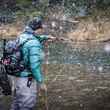
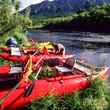
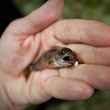



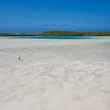
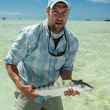








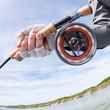



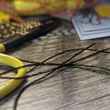
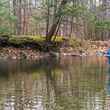


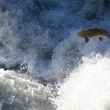
Comments
David replied on Permalink
Spot on. I think that list can also relate to different species of fish. At least that's how I approach my angling.
ginkthefly replied on Permalink
I'm fairly certain that once you're after permit, you're in some special hybrid of stage 3 and 4.
Todd Tanner replied on Permalink
There seem to be a fair number of hybrid stages popping up. I have a much lengthier version of this piece that I need to finish. It's focused on the idea that folks sort of pop into, and out of, the stages as circumstances dictate. I've never fished for permit - which is part of my ongoing efforts to stay married - but it seems like you could make a pretty good case that permit angling deserves its own category.
Fred Rickson replied on Permalink
Especially on the Placencia flats in Belize.
Russell Bassett replied on Permalink
Enjoyable read. Would have loved to have seen a progressive conservation ethic in there. Like by the time you reach four, you're participating in river cleanups and restoration projects, and pay your membership dues to fish conservation organizations. By the time you are at level five your leading 'em with your time, dollars, and talking to your legislators to effect positive policy. Fishing and conservation go hand and hand and are part of that stage progression. You can't reach zen if you're not giving back to the resource and sport that brings you enjoyment.
Rick replied on Permalink
This is a great article. I would say that I am somewhere between stage 3 and 4.
-Rick
http://www.rodmarks.com
Bryce replied on Permalink
I know that I found this a few months late unfortunately, but the fact is this article is almost identical to one I wrote in 2011. Here is the link for proof, http://www.makeitmissoula.com/2011/08/the-4-stages-of-fly-fishing/. It was also posted on moldy chum without my knowledge. I admit that I'm sure I'm not the first person to think about this idea, nor am I the first person to discuss it with others. That being said, I am the first person to write a blog about it, which means that this article that you wrote could easily be considered plagiarism. I do appreciate that the author took the time to read my article, and I also appreciate that it was enjoyed. I encourage anybody interested in this topic, to write a similar article with their own thoughts. I just don't appreciate that my thoughts were stolen and then rewritten almost exactly. I understand that you added a paragraph or two in an attempt to make it your own, but anybody who reads both articles can clearly see that this article was stolen. Please remove this article from this website at your earliest convenience.
Todd Tanner replied on Permalink
Bryce - Two thing you should know. First off, the "Five Stages of Fly Fishing" is not my original idea, and I've never claimed it as such.
Second, this particular piece is a reprint of my longtime Fly Fishing column from the March/April 2006 issue of Sporting Classics magazine. If my math is right, you're a little late to the party.
I don't need, or expect, an apology, but in the future you might want to be careful about making accusations that simply aren't true.
Todd
Shawn replied on Permalink
Nice!!! Bryce is one of those guys who may reach a zen-like state while fishing, as long as he can record every thought in his blog later. ;) Just kidding. It's not even possible then.
Bryce - I was the first one to invent the verb. You owe me $490.
Fred Rickson replied on Permalink
"Five Stages of Fly Fishing" II:
Commenting on the article "Five Stages of Fly Fishing" at an earlier date, reading the current "dust up," and being at Stage Five, both figuratively and literally (am 76 and fly fishing since 1948), I think there is another, more universal, very empirical, way to measure the Five Stages; fly patterns used. I am at Stage Five (having done the tarpon, permit, salmon, steelhead, carp, tropical, Alaska, etc. thing), now happily fishing Hebgen Lake near West Yellowstone for four months a year with a few days for salmonflies and another few days for grasshoppers on the Madison. I now use only one pattern each for salmonflies and grasshoppers and only Pheasant Tails and Adams on the lake; just four patterns.
The Stages
Stage 1. You tie flies using mom's sewing thread and feathers obtained using a BB gun on local birds. The patterns are your dad's flies, and you don't really have much of a clue what to do with them. But, you do learn how to tie, sorta.
Stage 2. You read articles and, not having much money, you order specific tying items (using actual envelopes and real postage stamps) to tie a few "can't miss" patterns. You win a few and lose a few.
Stage 3. You know everything, read about and tie a bunch of useless "can't miss" patterns from everywhere, order materials and tie numerous, unique, variation patterns most of which don't work or are never used. But, you do have numerous fly boxes which are absolutely full. You have arrived and your fly boxes are a cornucopia of size, color, and style of flies. You are invincible......anywhere!
Stage 4. You become smart enough (and older still) to seek out select patterns used by geezers who catch fish on the waters you fish. You now make enough money to buy any material and tie everything, but you are a little smarter, and have fewer but more specific patterns, however you still submit to enticing whims from articles you read. You have fewer fly boxes, but they are still filled to the brim.
Stage 5. You get too damn old to fish every corner of your personal world, and bucket list, so you regress to one or two waters, and tie only the flies that actually work there on a consistent basis. If you step into a beaver hole today, you might never get out. That's me, and very happily still flyfishing. Enjoy the game.
Todd Tanner replied on Permalink
I like it, Fred. I like it a lot. And while I don't fish Hebgen much any more, I'm tempted to send you $5 and a SASE for a look at your favorite gulper pattern.
Fred Rickson replied on Permalink
Todd,
Thank you for the kind words, but I think the five bucks would be better served towards a couple of beers in town...and since I am old, what is SASE? If your ever in the area, call Madison Arm Resort..they know where I am.
Sometimes simplifying one's life, Stage 5, can lead to unexpected enjoyment. A few days ago I was going through some dark recesses of garage storage when I came upon some tippet material. Not the 5X I use today, but some Rio Hard Mono, 80 lb, and some Mason Hard Type Nylon, 50 lb. I can remember tying tarpon leaders with this material and the size of the Keys mouths that sucked it all in....125 lb. plus. To think I once used that stuff for tippet material is worth a giggle at least. 78 degrees in Tucson today.....enjoy.
Best.
Patricia replied on Permalink
i have just recently completed stage 1! so much to learn but i am getting better every time i go out on the river!
Johnny D replied on Permalink
Nailed it. My very first trout was on the housey too! Great read that hit home.
Andrew Wesner replied on Permalink
I love your article. I especially like your insight into how we can move back and forth across stages. It's like a mood change or like the decisions I make when spinning vinyl on my turntable-sometimes you want to hear Miles Davis, other times, Live at Leeds at full volume is all that matters. One of my favorite aspects of Stage 5 is watching other people in whatever stage they are, enjoy themselves and act like children, if just for an afternoon. It always gives me hope that extends well past flyfishing. Additionally, never underestimate the value of a good streamside nap...
steven matthews replied on Permalink
Unfortunately most fly fishers miss the whole point just like fishing in general. You fish to enjoy the total experience (stage five). That's it. Anything else is just greed. Typical American. I started with lessons from my father and will pass it down. If you didn't have that I feel for you. But fishing or hunting for just another big catch or kill is what's wrong with America.
David Morin replied on Permalink
Stage 5 may be best said by the following poet: Many men go fishing all their lives without knowing that it is not fish they are after. Henry David Thoreau
Enjoy the journey. David
Jack Tatelman replied on Permalink
I appreciate your post. Had the same thoughts:
1st, Most, Biggest, Size of Challenge, Being in the Moment. But my twist is that it’s species selective. Since I am 90% salt, here’s how it stands
Stripers-Stage 5 ( I’m enjoy more watching a trout fly caster put on on their line for the 1st time
Bluefish- Stage 3 (Still on the hunt for a double digit)
Permit-Stage 1 (Sh-t their hard to catch)
Bonefish-Stage 3 (Caught my fair share of schoolies)
Tarpon Stage -2 (BTW This is my true addiction and I don’t think I’ll ever leave this stage)
Thanks
Pages